Growing ‘Madame Hardy’ Damask Rose
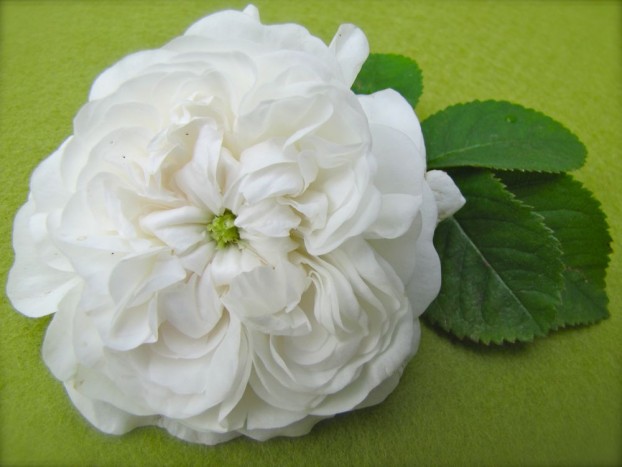 ‘Madame Hardy’, otherwise known as ‘Félicité Hardy’, is a white damask rose bred in Paris in 1832 by Alexandre Hardy who named it for his wife.
‘Madame Hardy’, otherwise known as ‘Félicité Hardy’, is a white damask rose bred in Paris in 1832 by Alexandre Hardy who named it for his wife.
‘Madame Hardy’, or ‘Félicité Hardy’ for the purists, is the loveliest damask rose I have ever come across, and is finally an esteemed member of our garden. I’ve dreamed of this rose for many years, having first seen it in the pages of Martha Stewart’s Living Magazine, which I cut out and saved for over a decade before I was able to purchase two for our garden last summer. I feel so fortunate to be finally growing this rose, and frankly these pictures do not do her justice.
 ‘Madame Hardy’ is a damask; a member of the European classes of old garden roses.
‘Madame Hardy’ is a damask; a member of the European classes of old garden roses.
‘Madame Hardy’ is considered an “Old Garden Rose” which, in it’s strictest definition, classifies all the roses that existed prior to 1867 when the first Hybrid Tea, ‘La France’, was introduced. Bred in 1832, ‘Madame Hardy’ was created by Julien Alexandre Hardy, a noted rose breeder who is credited with over 200 varieties and was the chief gardener at Jardin du Luxembourg, the famed garden in Paris. Hardy named this rose for his wife, Marie-Thérèse Pezard.
 Not to be reckoned with, Madame Hardy’s canes are quite covered with sharp thorns.
Not to be reckoned with, Madame Hardy’s canes are quite covered with sharp thorns.
‘Madame Hardy’ is Damask rose which is a member of the European classes of old garden roses, noted for it’s long bloom time, it’s vigor, and it’s incredible scent. In fact, Damasks are still in heavy commercial production to make attar of roses, which is an essential oil used in the perfume industry.
 To me, the scent of ‘Madame Hardy’ is that of a fresh, raw honey
To me, the scent of ‘Madame Hardy’ is that of a fresh, raw honey
‘Mme Hardy’ is hardy to zones 4-9 and has double, cupped flowers with a very prominent green button eye. Like the Gallica class of roses, which I believe ‘Mme Hardy’ is related to, it has incredible disease resistance and will even thrive in semi-shadier locations. This rose blooms on old wood, so if pruning is necessary, do so immediately after flowering. ‘Mme Hardy’ grows to a height and spread of about 5′ with blooms approximately 3″ across.
 ‘Mme Hardy’ blooms in clusters of about 3-4, however, I’ve noticed the center flower seems to be the largest and showiest.
‘Mme Hardy’ blooms in clusters of about 3-4, however, I’ve noticed the center flower seems to be the largest and showiest.
The foliage of ‘Mme Hardy’ is a matte, dark green, and has the texture of paper. As a matter of fact, I will be probably be transplanting one of our roses as due to it’s thin, delicate leaves, suffers from wind damage and requires a more protected location. Additionally, the leaves, canes, and calyces have an almost fuzzy or sticky (for lack of better words) texture, and tiny pieces of fluff, fuzz, and even the sawdust mess the carpenter bees are making nearby tend to stick to this rose. (If you look closely, you can see some sawdust clinging to the calyces in some of these pictures).
 The calyces of ‘Madame Hardy’ are unusually elongated and fringed like a fancy headdress.
The calyces of ‘Madame Hardy’ are unusually elongated and fringed like a fancy headdress.
As I mentioned earlier, I have two ‘Mme Hardy’ roses growing in our garden. One is planted in a container and in a south-facing position and the other in a raised bed in an east-facing position. Both are still quite small, we’re talking maybe only a couple of feet high at this point, and yet both are covered in blooms and doing quite well in spite of their different locations. ‘Mme Hardy’ is a once-bloomer, with a relatively long bloom period in late spring to early summer lasting about 4-5 weeks in our location.
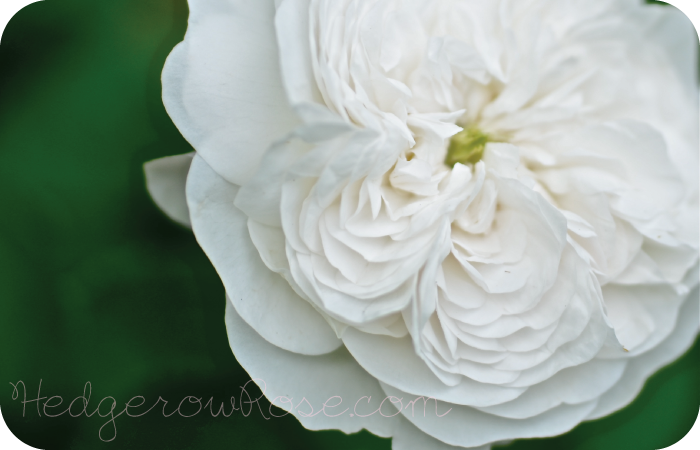
The double, cupped, blossoms of ‘Mme Hardy’ are beautifully formed, with classic quartered petals surrounding a fresh, green, button eye.
The American Rose Society gives Félicité Hardy a rating of “outstanding.” In other words, ‘Mme Hardy’ has been rated as being in the top 1%.


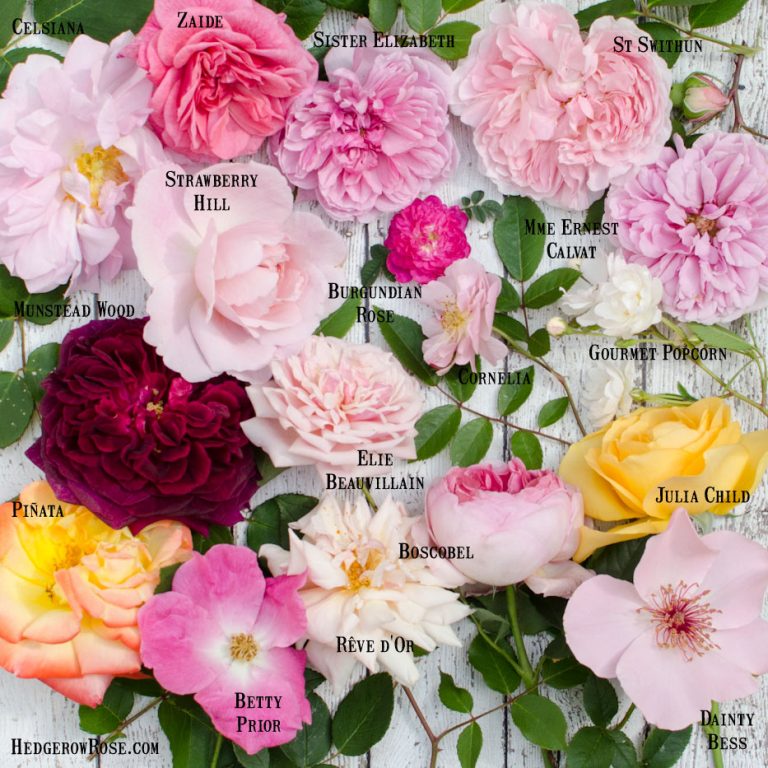
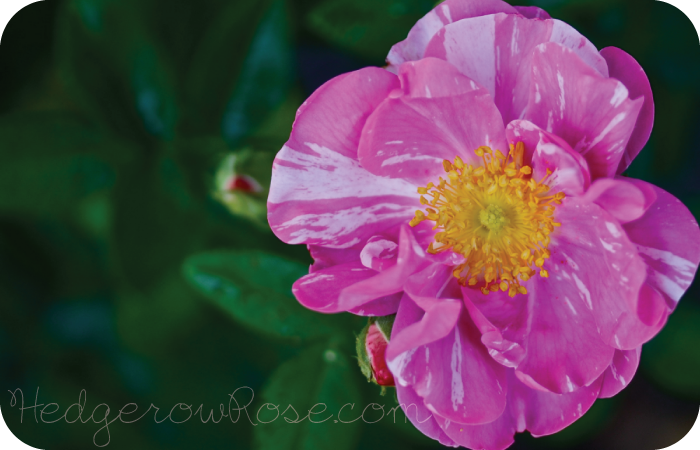
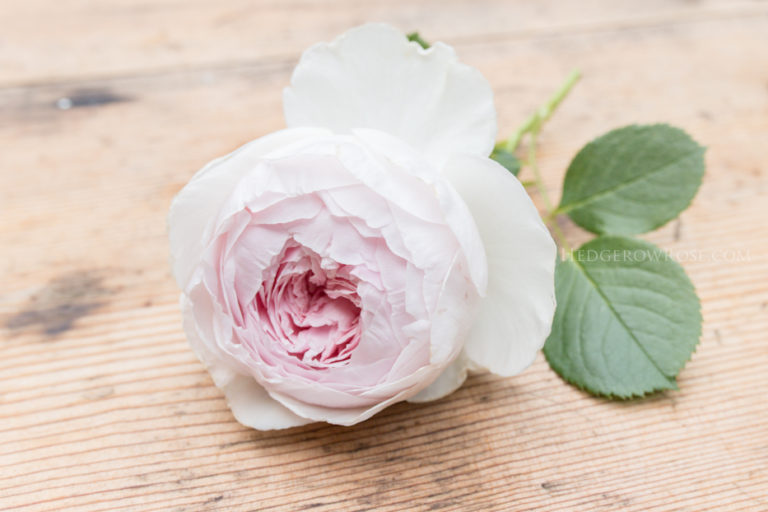
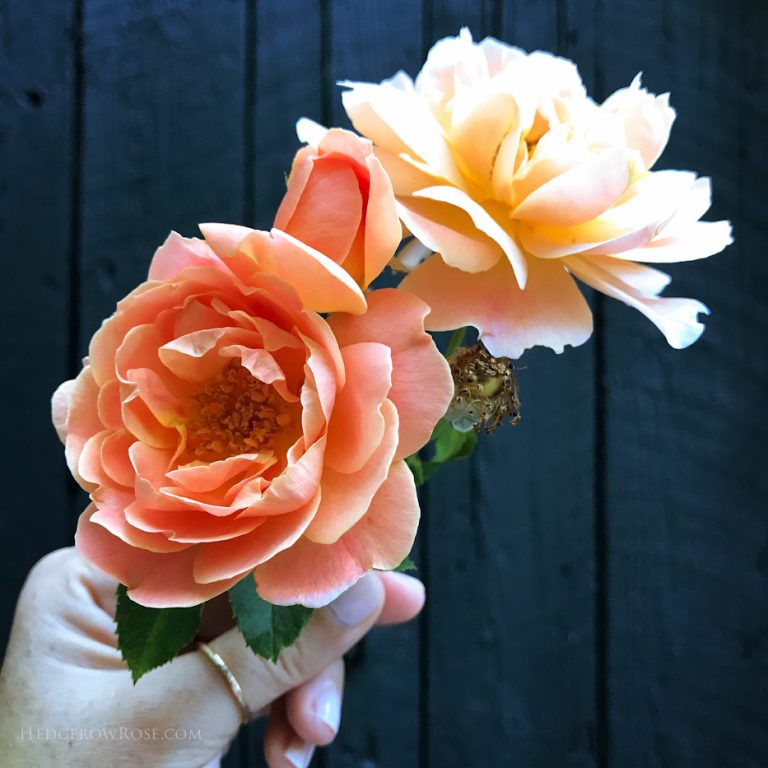
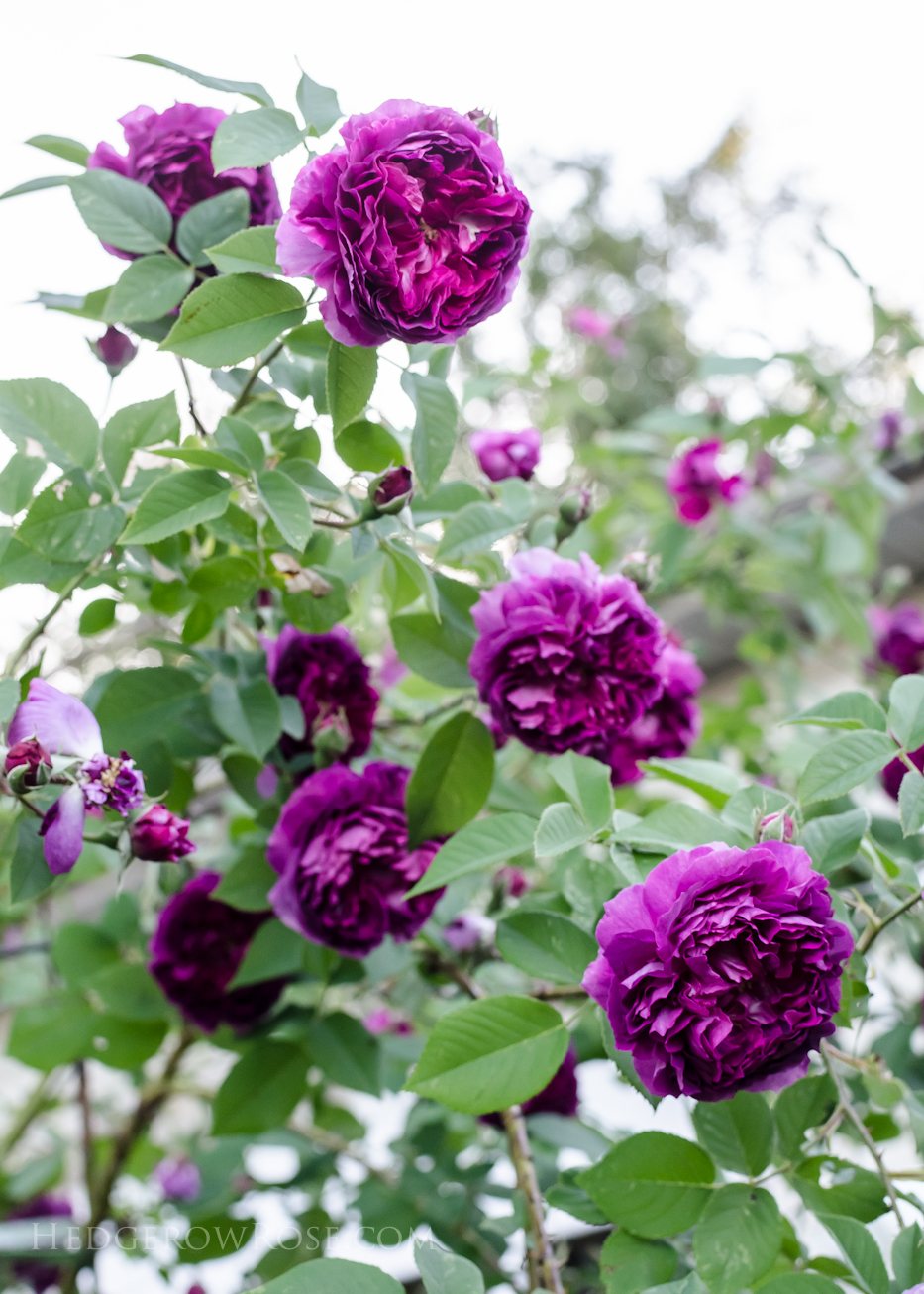
Love the bloom of this rose. I love roses with a ‘button’ center. Great photos.
Thank you! 🙂
Im so happy to see such good pictures of the REAL Mme Hardy. I have been disappointed by two or three good nurseries sending the wrong plants. She is far more beautiful and I wonder if you have a reliable source?
Gosh! I had no idea that was a problem! It’s been a few years, but if I remember correctly, I’m pretty sure that I purchased mine from the Antique Rose Emporium. Good luck!
Absolutely beautiful photos! Madame Hardy is my favourite rose and I, too, waited a long time before finally making space for one in our garden (I cut the lower branches off a spawling ceonothus and planted Madame Hardy below it, along with some lavender for ground cover). I would love to see some photos of your roses in situ, especially the container grown one – I hadn’t thought of doing that but am intrigued that it seems to be growing happily in your garden and definately gives me food for thought! Thank you for sharing!
Thank you Lori, I’m so glad for your visit and your comment! I will make more of an effort to get photos of the rose containers. I do have some posted sporadically around the blog, but I find I often avoid taking them because they’re all in our driveway and that in itself isn’t the most lovely thing in the world. I will say, though, that this season I am moving ‘Mme Hardy’ from her container into the garden. While she bloomed beautifully , I feel that she has outgrown it and of course would do better in the ground.
Thank you for your detailed descriptions and gorgeous photos – I am hoping to plant this rose in my central Australian garden and the notes are so helpful – as well as a pleasure to read.
Thank you for your visit, Helen! I am so pleased this post was helpful to you! 🙂
Do you have an email where I could send you pic’s for identification? My grandma nancy has white upright growing rosea that are very very old..ive been tryng to compare them to this Damask or white De Meaux.
Hi Stacy, you can reach me via the contact button at the top of this page or via hedgerowrose@gmail.com.
Conversely, you might consider posting your question to the rose forums on GardenWeb and get the opinion of a variety of very knowledgeable rosarians. 🙂
Thank you for your article and photos. I have a 16 year old Madame Hardy that has survived a move and transplantation in December. It’s in a protected location to keep the deer away, doesn’t get full sun, but faces west and produces lovely blooms in May each year. I’m curious if you fertilize yours. I usually do in April and early May. This year I didn’t fertilize, and it still bloomed beautifully and on schedule.
Hello Sharon, Welcome! Nope, I don’t fertilize my roses. I simply mulch with compost twice a year. 🙂 Your Mme Hardy sounds lovely!